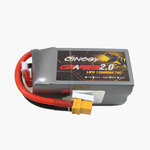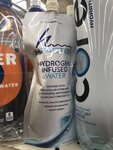D
Deleted member 4210
Guest
This article is almost a year old now, but its a great reminder that we have barely scratched the surface of what's possible with existing Lithium batteries, let alone newer graphene enhanced lithium battery technology.
https://www.bike-eu.com/sales-trend...28.1110740758.1540949825-585769753.1540949825
In less than 5 years, it would not surprise me at all, to see 50 AH to 100 AH batteries on ebikes, that are not too much larger than today's batteries that are 10 AH to 20 AH. They might be rather expensive ebikes, but the technology has been in the works for some time.
For reference, a 100 AH Sealed AGM (Lead Acid) battery weighs about 63 lbs, versus the current 100AH LiFePO4 battery weighs about 29 lbs. In the not too distant future, Graphene enhanced 100 AH Li-Ion battery MIGHT only weigh as little as 13 lbs. And charging time quantified in minutes versus 'hours'.
So it won't be too long from now, when we look back at 2018, and think about how 'quaint' our 'frame integrated' or 'rack mounted' 10 to 20 AH ebikes batteries actually were.
https://www.bike-eu.com/sales-trend...28.1110740758.1540949825-585769753.1540949825
In less than 5 years, it would not surprise me at all, to see 50 AH to 100 AH batteries on ebikes, that are not too much larger than today's batteries that are 10 AH to 20 AH. They might be rather expensive ebikes, but the technology has been in the works for some time.
For reference, a 100 AH Sealed AGM (Lead Acid) battery weighs about 63 lbs, versus the current 100AH LiFePO4 battery weighs about 29 lbs. In the not too distant future, Graphene enhanced 100 AH Li-Ion battery MIGHT only weigh as little as 13 lbs. And charging time quantified in minutes versus 'hours'.
So it won't be too long from now, when we look back at 2018, and think about how 'quaint' our 'frame integrated' or 'rack mounted' 10 to 20 AH ebikes batteries actually were.

